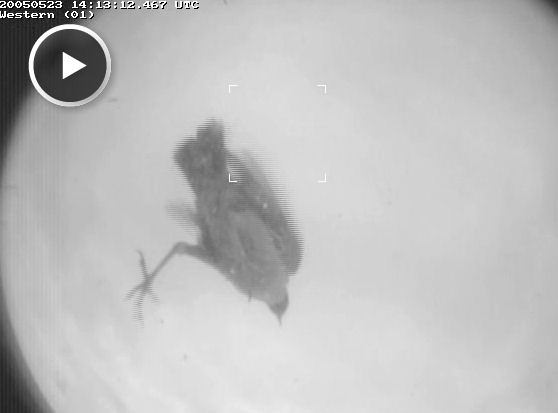http://www.word-detective.com/2009/02/22/blue-streak/ wrote:
Dear Word Detective: I was wondering if you could help me find the origin of the phrase “blue streak” as in “talk a blue streak” or “curse a blue streak.” The only thing I could find was that it might have something to do with lightning. — Eric.
<<Good question, but before we begin, I would strongly advise against having anything to do with lightning, and I speak from personal experience. Three years ago this month I had a close encounter with ball lightning (yes, it most certainly does exist), and some people say I haven’t been quite right ever since. Apart from a tendency to cry when I eat oatmeal and bark when I’m angry, however, I can’t imagine what they’re talking about. Anyway, lightning is definitely nasty stuff.
Onward. Human beings have identified a wide spectrum of colors (and catalog copywriters are constantly inventing new ones), but when it comes to popular figures of speech, “blue” takes the prize for both number and variety of senses. We speak, for example, of sadness or depression as “the blues,” although no one has ever come up with a convincing explanation why. “Blues” music does often center on depressing “blue” subjects (lover left, dog died, etc.), but that “blue” may actually be a reference to the genre’s use of “blue notes,” halfway between proper scale notes. Elsewhere, “blue blood” is said to signify royalty or high social class, but was originally just a reference to very light skin, which made the oxygen-rich blood in one’s veins visible under the skin. The opposite of the blue-blooded idle rich are, of course, “blue-collar” workers, so-called for the denim shirts that once were standard factory wear.
Some towns in the US still enforce “blue laws” forbidding or restricting certain activities on Sundays, but the origin of the term has been lost in the mists of time along with the Puritans who concocted the laws. And, at the other end of the spectrum, we have the slightly antiquated (but equally mysterious) adjective “blue” meaning “obscene,” which dates to the 1820s (and thus predates “blue movies” by a century). It’s possible, however, that “blue” in the “porn” sense arose from the term “blue laws” being generalized to mean any kind of censorious legislation.
Meanwhile, as the stock exchange tumbles and staid “blue chip” stocks take a beating, it’s appropriate to note that “blue chip” meaning “top rank, best” comes from the highest denomination chips in the very un-staid game of poker, which are traditionally blue.
All of which brings us to “blue streak,” which means “with great intensity or speed” and originated in the US in the early 18th century. In all likelihood, the term did arise by analogy to the speed and force of a bolt of lightning, especially in “talk a blue streak,” meaning to speak rapidly and excitedly. The “blue” in “curse a blue streak” probably also invokes “blue” in the sense of “obscene.” A similar phrase, “blue blazes” (“And the two Jacobs swore like blue blazes agin him,”1858), was originally a reference to the fires of Hell, where it is said that brimstone burns with a pale blue flame.>>
 Asteroids in the Distance
Asteroids in the Distance


